Statements by Leibniz-WissenschaftsCampus - Byzanz zwischen Orient und Okzident - Mainz/Frankfurt
Books by Leibniz-WissenschaftsCampus - Byzanz zwischen Orient und Okzident - Mainz/Frankfurt
Languages of Power and Authority in Byzantium and Beyond, 2024
This volume is the first in a series of publications prepared by the Young Academics Network
Byza... more This volume is the first in a series of publications prepared by the Young Academics Network
Byzantium Mainz / Frankfurt. These small volumes reflect the discussions conducted in one of our »round tables«, a format that we established in 2019 to bring together young scholars
in Byzantine Studies in order to share their work and to discuss current topics of research in
our disciplines. On the basis of the presented papers, the round tables provide a space for
intense exchange between the researchers and offer the possibility to jointly develop new
thoughts and perspectives of research.
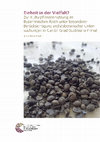
Byzanz zwischen Orient und Okzident 28, 2023
Plants are of great importance in everyday human life, serving not only as sources of food, but a... more Plants are of great importance in everyday human life, serving not only as sources of food, but also as a source of raw materials, building materials, fuel or feed for domestic animals. Different plant spectra can therefore provide insights into people's everyday lives, their cultural preferences or environmental conditions. The study deals with crop use in the Byzantine Empire based on archaeobotanical data and has two main foci: on the one hand, the archaeobotanical analysis of macroremains from the early Byzantine city of Caričin Grad in southern Serbia, on the basis of which the diet of the urban population as well as agricultural practices are reconstructed. On the other hand, a literature-based supra-regional and diachronic overview of crop use in the Byzantine Empire (395-1453) is given. In the evaluation at the regional level, characteristic features of crop use of each region and the respective epochs are elaborated against the historical background and the prevailing environmental conditions and then transferred into a supra-regional and diachronic overview.
Byzanz zwischen Orient und Okzident 27, 2022
This study examines the significance of the Byzantine Orthodox heritage for the national movement... more This study examines the significance of the Byzantine Orthodox heritage for the national movement of the Serbs in the 18th and 19th centuries. Based on contemporary historiographical works, newspaper articles, correspondence and laws, the monograph is dedicated to the use of the offer of surviving structures of the Byzantine Empire and its Church by Serbian nation-builders: The focus of the study is on ecclesiastical and secular actors from the narrow stratum of the Serbian educated and functional elite, who accessed and dealt with the Byzantine legacy to stage and legitimise rule, to consolidate their own identity and to justify certain political strategies.
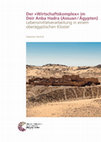
Byzanz zwischen Orient und Okzident 26, Oct 2022
The Coptic monastery of Deir Anba Hadra is located opposite the southern Egyptian city of Aswan o... more The Coptic monastery of Deir Anba Hadra is located opposite the southern Egyptian city of Aswan on the west bank of the Nile. This largest and best-preserved monastery in the region has been researched since 2013 by an interdisciplinary project within the framework of a DAI concession. The “economic complex” on the upper terrace was investigated in terms of construction history and archaeology as part of this project. In the evaluation, 16 construction phases were identified, which can be associated with different functions, and it is possible to identify this building complex as a site for food production. Bread, castor oil, wine and garum were produced here.
The building history research has shown that the core of the complex was originally built as an oratory for the monks´ hourly prayers. With the addition of several functional rooms, it was extensively redesigned after the 6th/7th century. This transformation made it possible to set up a bakery, the capacities of which were gradually expanded. With the construction of a crushing basin castor oil could be produced in the northern part of the building complex. Further north, a wine press was added, and two tanks were built in the immediate vicinity of the press. They were probably used to produce garum. In addition to the deliberate dismantling of individual walls, fireplaces and feeding troughs are evidence of the use of various walls even after the end of the use of Deir Anba Hadra as a monastery.
The production facilities identified at Deir Anba Hadra were compared with installations in the (late) ancient Mediterranean. Through these comparisons, not only technical details can be explained, but also production processes.
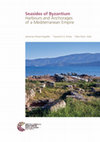
Byzanz zwischen Orient und Okzident 21, 2021
In recent years, interest in the study of maritime installations and networks in the Roman and By... more In recent years, interest in the study of maritime installations and networks in the Roman and Byzantine Mediterranean has increased considerably, as documented by various projects and publications.
The conference »Seasides of Byzantium. Harbours and Anchorages of a Mediterranean Empire«, from which the papers collected in the present volume emerged, took place in Athens in 2017 as part of a cooperation between the DFG-funded Special Research Programme (SPP 1630) »Harbours from the Roman Period to the Middle Ages« and the National Hellenic Research Foundation. It united historians, archaeologists and geoarchaeologists to explore harbours and anchorages as core maritime infrastructure to the Late Roman and Byzantine Empire.
General phenomena such as the organisation of the Byzantine navy and its operations or lighthouses are discussed in this volume as well as new geoarchaeological research methodologies in harbour archaeology. Most contributions in the present volume examine case studies for the most important maritime core region of the Byzantine Empire, the Aegean. This sea connected the remaining provinces of the empire in Southeastern Europe and Asia Minor after the loss of Syria, Palestine, Egypt, and North Africa to the Arabs in the 7th century AD. In addition to technical and geographical aspect, the studies in this volume make clear that we need to explore more and more the social embedding of the seasides of Byzantium to understand their dynamics in all their complexity.
Byzanz zwischen Orient und Okzident 24, 2021
The fortunes of Byzantine Constantinople have always been inextricably linked to the sea. The top... more The fortunes of Byzantine Constantinople have always been inextricably linked to the sea. The topographical, demographic and economic development of the city and its networks are reflected in the history of its harbours. This volume offers an exhaustive study of Constantinople’s Byzantine harbours on the Sea of Marmara and the Golden Horn, as well as nearby European and Asian landing stages. The fifteen chapters by eleven contributors here present a broad synthesis of the current state of research using written, pictorial and archaeological sources.

Byzanz zwischen Orient und Okzident 25, Dec 2021
This study traces the development of Latin, Greek and Oriental Christian aristocratic groups and ... more This study traces the development of Latin, Greek and Oriental Christian aristocratic groups and their social and cultural interaction in fifteenth-century Cyprus. Since 1192, the formerly Byzantine island was under the rule of the Lusignan Crusader dynasty, which had introduced a nobility of Crusader families. However, due to various moments of political and economic crisis from the end of the fourteenth century onwards, autochthonous Greeks and Oriental Christians (so-called Syrians) rose high in the state administration and challenged the power balance.
On the basis of a prosopographical database registering all members of the Cypriot élite between 1374 and the 1460s, this study explores the chances of social mobility that the upheavals offered to Greeks and Syrians in particular, and the fate of the noble Crusader families who had to contend with these newcomers. It examines the consequences of this social change for the relationship between the ascending and the established élite and their degree of integration. Finally, it analyses the interplay between social developments and identity construction, and asks how the aristocrats constructed their identities with respect to social standing, ethnicity and religion. This analysis of interdependent social change and identity construction permits a new, broad perspective on the development of the Cypriot aristocracies during the fifteenth century.

Byzanz zwischen Orient und Okzident 23, Dec 2021
The transformation and restructuring of the ancient city in Asia Minor in the Late Antique and Ea... more The transformation and restructuring of the ancient city in Asia Minor in the Late Antique and Early Byzantine periods has become a central topic of archaeological and historical research in recent decades. The contributions to this volume present an extremely differentiated picture of the development of cities and their surrounding areas during this period. An ideal starting point for this is the city of Assos on the southern coast of the Troad, where the transformation of the ancient city from the 4th to the 8th century has been the focus of research since 2013. The picture gained there is placed in a broader context in the present volume by contributions on Pergamon, Sardis, Ephesos, Didyma and Sagalassos, which shed light on the development process of the Late Antique and Early Byzantine cities of Western Asia Minor in very different ways from various aspects.
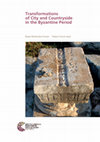
Byzanz zwischen Orient und Okzident 22, Mar 2020
The concept of »transformation« or simply »reshaping« contains the elements of what remains, the ... more The concept of »transformation« or simply »reshaping« contains the elements of what remains, the conservative, the kernel of what continues, as well as the elements of what changes, the innovative. In the framework of this publication of articles from a conference in 2016 on »Transformations of City and Countryside in the Byzantine Period«, we draw attention to this dichotomy and investigate the social dynamics behind changes in urban and rural life in the Byzantine period that can be detected by archaeology, history and art history.
The Byzantine Empire is an ideal subject for studying how social transformation proceeds, what triggers transformation, what factors underlie it and what the processes involved are. Who were the agents of transformation and how did they and their environment change? How flexible were the state or its citizens in handling external and internal pressures of innovation? In what manner and to what extent were the Byzantines able to preserve their identity and the internal cohesion of their empire in the course of these processes of adaptation?

Byzanz zwischen Orient und Okzident 20, Jul 2020
For late Byzantine art history, Crete provides a unique collection of monuments. The period from ... more For late Byzantine art history, Crete provides a unique collection of monuments. The period from 1211 to 1669, when the island was under the rule of the Venetians, allows insights into a multifaceted and complex society. Within this unique artistic and cultural landscape, the works of the late Byzantine church painter Theodor Daniel and his nephew Michael Veneris particularly stand out. The present publication devotes itself for the first time to an in-depth and wide-ranging investigation of their works. Beside the identification and attribution of their unsigned works, analyses accruing from this form key aspects. The most important step for the aims expressed is provided by the systematic attribution of the pair’s works. This and the assignment of the unsigned works are found in the first part of the publication. In the second part the interconnections of Theodor Daniel and Michael Veneris with other Cretan artists is discussed. Beside contacts with Ioannes Pagomenos, probably the most prominent Cretan church painter of the 14th century, there is a further series of indications that suggest that there existed a regular network among the artists on the island.
Byzanz zwischen Orient und Okzident 19, Jul 2020
Proceedings of the Conference held in Jersualem, 5th to 7th December 2017
Jerusalem is a city ... more Proceedings of the Conference held in Jersualem, 5th to 7th December 2017
Jerusalem is a city holy to three world religions: Judaism, Christianity and Islam. From the early Byzantine period, Christian pilgrimage here and to other holy sites became a »mass phenomenon«. Thousands of Christians set out to holy sites in Palestine, Egypt and other places in order to physically experience salvation history and seek divine intervention in their lives. Numerous travel reports, pilgrim guides and other written sources highlight important aspects of pilgrimage. In addition, many well-preserved churches, monasteries, hostels and other buildings, as well as rich archaeological findings, provide us with a vivid and synthetic picture of the history of pilgrimage to the Holy Land.
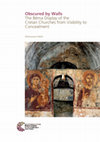
Byzanz zwischen Orient und Okzident 18 , Jul 2020
The book researches the Bēma display of the Cretan churches in a time period spanning from the By... more The book researches the Bēma display of the Cretan churches in a time period spanning from the Byzantine re-conquest of the island (11th century) until the middle of the Venetian dominance (15th century). It focuses on the apparition and distribution of the Templon-barrier, the function of a certain group of frescoes as prostration images and the (partial) establishment of fresco-painted masonry screens at the Orthodox churches of the island, just before the prevalence of the »wooden wall of icons« – known as Iconostasis.
This study reveals the artistic and cultic multiplicity of arrangements, consisting of archaism and modernization, until the crystallization of the Iconostasis as the »distinctive feature of churches of the Byzantine rite«, thus a material proof of cultural identity and religious consciousness of the Orthodox populace in an area (Crete) and a period (Venetian rule) that is characterized by both osmosis and conflict.
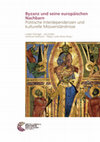
Byzanz zwischen Orient und Okzident 17, Apr 2020
On the one hand cultural misunderstandings represent a prerequisite for intercultural communicati... more On the one hand cultural misunderstandings represent a prerequisite for intercultural communications, on the other hand they can also be understood as a method or result of interculturalism and transcultural relationships. In this process there are unthinking as well as provoked and politically manipulated misunderstandings, or rather alleged misunderstandings, which disguise real political or church political conflicts of interest. In addition, there are misunderstandings in research which sometimes states a misunderstanding too quickly, where logic and context are not immediately evident. Such misunderstandings dictated the political-cultural pattern of relationships among the Byzantine Empire, the Latinised West and Slavic world, who all regarded themselves as parts of ecumenical Christianity and who stood in close political and cultural contact over many centuries. In the present book proponents of history, Byzantine studies, art history and theology apply themselves to the analysis of this phenomenon.
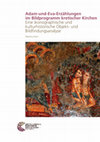
Byzanz zwischen Orient und Okzident 16, Apr 2020
The Western sacred art landscape of the Middle Ages presents a rich pageantry of images about the... more The Western sacred art landscape of the Middle Ages presents a rich pageantry of images about the Adam and Eve story by using overlapping genres. In the large-scale paintings of the Eastern Church, on the other hand, the subject is only included in the repertoire of the churches during the post-Byzantine period. Thus, the innovative origins of Adam and Eve cycles in Venetian Crete of the 14th and 15th centuries, are even more remarkable. In five of the numerous painted Cretan churches, pictorial sequences with Adam and Eve were integrated into the iconographic concept. Beside the reconstruction of the partially destroyed frescoes, the comprehensive process of the iconographic invention will be subject of a detailed examination in this study, based on art- and cultural-historical analysis. The genesis of the wall paintings is characterized by a strong tension and a dynamic interplay between the preservation of traditional and available patterns and the inventiveness of innovative and creative elements. The broadly diversified research including Western and Eastern art traditions offers not only surprising insights into unusual pictorial formulas, but also in the varying reasons of reception in relation to the donors and their specific motivation.
Byzanz zwischen Orient und Okzident 14, Jan 2020
Piety is not the only driving force for the development of Christian pilgrimage. In a broad chron... more Piety is not the only driving force for the development of Christian pilgrimage. In a broad chronological and spatial perspective, the book deals with the economic interconnections that affected Byzantine pilgrimage from the 5th to the 12th century.
Going on pilgrimage is always religiously motivated and socially embedded, but the exact selection of the pilgrimage destination, the pilgrimage route, the offerings upon arrival and much more have been and are determined by basic economic constants and time-dependent socio-economic dynamics.
The book illuminates the Byzantine pilgrimage sanctuaries by examining their development, organizational and financial structure, which was already framed by laws in Late antiquity.
Byzanz zwischen Orient und Okzident 15, Oct 2019
The empire of the Persian Sasanids (224-651 AD) extended from today's Iran, Iraq, Azerbaijan, Pak... more The empire of the Persian Sasanids (224-651 AD) extended from today's Iran, Iraq, Azerbaijan, Pakistan to Afghanistan. The Caucasus regions were also under its political influence. Many elements of Sasanian art and culture can be found in neighboring countries, such as Byzantium or the Christian Caucasus, and continued to live after the Sasanian demise in the Islamic dominions that developed on their former territory.
- The influence of the Sasanids on the surrounding countries and territories
- The survival of Sasanian art after the end of the Persian Empire
To examine the continuing role of the Sasanian Persians and their culture, an international conference was held in September 2017 at the Römisch-Germanisches Zentralmuseum in Mainz. The contributions of scientists from different disciplines are published in this volume.
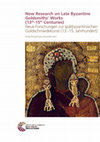
Byzanz zwischen Orient und Okzident 13, 2019
This volume comprises thirteen papers from the conference ‘New Research on Late Byzantine Goldsmi... more This volume comprises thirteen papers from the conference ‘New Research on Late Byzantine Goldsmiths‘ Works (13th to 15th Centuries)’, held in the Römisch-Germanisches Zentralmuseum Mainz in October 2019. The contributions primarily deal with the material culture of goldsmiths’ works, such as crosses, reliquary caskets, jewellery, enamel works, and precious stones, spanning the wide geographical area of Byzantium and many of its neighbours, from Russia via Trebizond and Serbia to Crete. Furthermore, written sources on Byzantine goldsmiths, their craft and the provenance of precious metals provide evidence for goldsmithing in Byzantium throughout its history.
With contributions by Andreas Rhoby, Paul Hetherington, Olga Shashina, Martin Dennert, Sabrina Schäfer, Anastasios Antonaras, Antje Steinert, Jessica Schmidt, Nikos Kontogiannis, Vana Orfanou, Holger Kempkens, Irina A. Sterligova, Vesna Bikić and Martina Horn.
Byzanz zwischen Orient und Okzident 12, Apr 2019
The contributors in the edited volume »Ambassadors, Artists, Theologians: Byzantine Relations wit... more The contributors in the edited volume »Ambassadors, Artists, Theologians: Byzantine Relations with the Near East from the Ninth to the Thirteenth Centuries« examine the complex dynamics which arose between the Byzantine Empire and the Near East.
Moving beyond the tradition of histoire événementielle, the contributions collected here highlight the passing of artistic practices, ideas and interlocutors between Byzantium and the Islamicate world. In this way, this volume seeks to nuance and contextualize our understanding of the relationship between these two medieval cultural spheres.
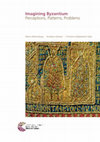
Byzanz zwischen Orient und Okzident 11, Jan 2019
Byzantium the other. Byzantium the pompous. Byzantium the eternal. The mere existence of this emp... more Byzantium the other. Byzantium the pompous. Byzantium the eternal. The mere existence of this empire with his rich history and otherness from western European traditions spurred the minds of scholars, noblemen, politicians and ordinary people throughout its survival and long beyond its final downfall in 1453. Neglecting its great political and cultural influence on neighbouring countries and beyond, Enlightenment writers stripped Byzantium of its original historical reality and thus created a model, which could be utilised in very different constructs, stretching from positive to absolutely negative connotations. With the rise of new nationalisms, primarily in Eastern and Southeastern Europe, and the associated politically inspired historical (re)constructions in the 19th and 20th century, the reception of Byzantium gained new facets, its perception reached into new dimensions. In this volume, we would like to shed some light on these patterns and the problems they entail, and show the different ways in which »Byzantium« was used as an argument in nation-building and in constructing new historiographical narratives, and how its legacy endured in ecclesiastical historiography.


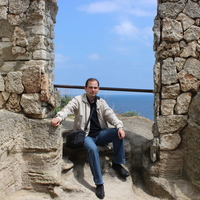
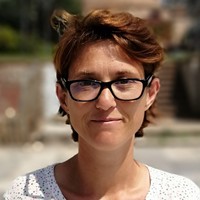
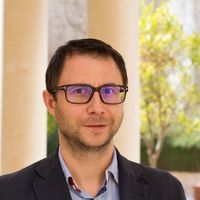

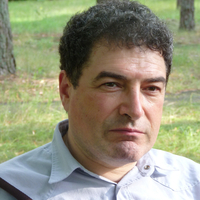
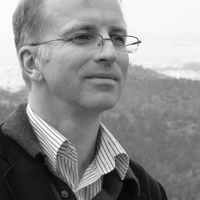
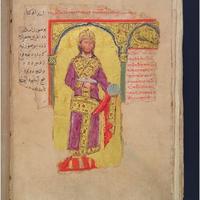

Uploads
Statements by Leibniz-WissenschaftsCampus - Byzanz zwischen Orient und Okzident - Mainz/Frankfurt
Books by Leibniz-WissenschaftsCampus - Byzanz zwischen Orient und Okzident - Mainz/Frankfurt
Byzantium Mainz / Frankfurt. These small volumes reflect the discussions conducted in one of our »round tables«, a format that we established in 2019 to bring together young scholars
in Byzantine Studies in order to share their work and to discuss current topics of research in
our disciplines. On the basis of the presented papers, the round tables provide a space for
intense exchange between the researchers and offer the possibility to jointly develop new
thoughts and perspectives of research.
The building history research has shown that the core of the complex was originally built as an oratory for the monks´ hourly prayers. With the addition of several functional rooms, it was extensively redesigned after the 6th/7th century. This transformation made it possible to set up a bakery, the capacities of which were gradually expanded. With the construction of a crushing basin castor oil could be produced in the northern part of the building complex. Further north, a wine press was added, and two tanks were built in the immediate vicinity of the press. They were probably used to produce garum. In addition to the deliberate dismantling of individual walls, fireplaces and feeding troughs are evidence of the use of various walls even after the end of the use of Deir Anba Hadra as a monastery.
The production facilities identified at Deir Anba Hadra were compared with installations in the (late) ancient Mediterranean. Through these comparisons, not only technical details can be explained, but also production processes.
The conference »Seasides of Byzantium. Harbours and Anchorages of a Mediterranean Empire«, from which the papers collected in the present volume emerged, took place in Athens in 2017 as part of a cooperation between the DFG-funded Special Research Programme (SPP 1630) »Harbours from the Roman Period to the Middle Ages« and the National Hellenic Research Foundation. It united historians, archaeologists and geoarchaeologists to explore harbours and anchorages as core maritime infrastructure to the Late Roman and Byzantine Empire.
General phenomena such as the organisation of the Byzantine navy and its operations or lighthouses are discussed in this volume as well as new geoarchaeological research methodologies in harbour archaeology. Most contributions in the present volume examine case studies for the most important maritime core region of the Byzantine Empire, the Aegean. This sea connected the remaining provinces of the empire in Southeastern Europe and Asia Minor after the loss of Syria, Palestine, Egypt, and North Africa to the Arabs in the 7th century AD. In addition to technical and geographical aspect, the studies in this volume make clear that we need to explore more and more the social embedding of the seasides of Byzantium to understand their dynamics in all their complexity.
On the basis of a prosopographical database registering all members of the Cypriot élite between 1374 and the 1460s, this study explores the chances of social mobility that the upheavals offered to Greeks and Syrians in particular, and the fate of the noble Crusader families who had to contend with these newcomers. It examines the consequences of this social change for the relationship between the ascending and the established élite and their degree of integration. Finally, it analyses the interplay between social developments and identity construction, and asks how the aristocrats constructed their identities with respect to social standing, ethnicity and religion. This analysis of interdependent social change and identity construction permits a new, broad perspective on the development of the Cypriot aristocracies during the fifteenth century.
The Byzantine Empire is an ideal subject for studying how social transformation proceeds, what triggers transformation, what factors underlie it and what the processes involved are. Who were the agents of transformation and how did they and their environment change? How flexible were the state or its citizens in handling external and internal pressures of innovation? In what manner and to what extent were the Byzantines able to preserve their identity and the internal cohesion of their empire in the course of these processes of adaptation?
Jerusalem is a city holy to three world religions: Judaism, Christianity and Islam. From the early Byzantine period, Christian pilgrimage here and to other holy sites became a »mass phenomenon«. Thousands of Christians set out to holy sites in Palestine, Egypt and other places in order to physically experience salvation history and seek divine intervention in their lives. Numerous travel reports, pilgrim guides and other written sources highlight important aspects of pilgrimage. In addition, many well-preserved churches, monasteries, hostels and other buildings, as well as rich archaeological findings, provide us with a vivid and synthetic picture of the history of pilgrimage to the Holy Land.
This study reveals the artistic and cultic multiplicity of arrangements, consisting of archaism and modernization, until the crystallization of the Iconostasis as the »distinctive feature of churches of the Byzantine rite«, thus a material proof of cultural identity and religious consciousness of the Orthodox populace in an area (Crete) and a period (Venetian rule) that is characterized by both osmosis and conflict.
Going on pilgrimage is always religiously motivated and socially embedded, but the exact selection of the pilgrimage destination, the pilgrimage route, the offerings upon arrival and much more have been and are determined by basic economic constants and time-dependent socio-economic dynamics.
The book illuminates the Byzantine pilgrimage sanctuaries by examining their development, organizational and financial structure, which was already framed by laws in Late antiquity.
- The influence of the Sasanids on the surrounding countries and territories
- The survival of Sasanian art after the end of the Persian Empire
To examine the continuing role of the Sasanian Persians and their culture, an international conference was held in September 2017 at the Römisch-Germanisches Zentralmuseum in Mainz. The contributions of scientists from different disciplines are published in this volume.
With contributions by Andreas Rhoby, Paul Hetherington, Olga Shashina, Martin Dennert, Sabrina Schäfer, Anastasios Antonaras, Antje Steinert, Jessica Schmidt, Nikos Kontogiannis, Vana Orfanou, Holger Kempkens, Irina A. Sterligova, Vesna Bikić and Martina Horn.
Moving beyond the tradition of histoire événementielle, the contributions collected here highlight the passing of artistic practices, ideas and interlocutors between Byzantium and the Islamicate world. In this way, this volume seeks to nuance and contextualize our understanding of the relationship between these two medieval cultural spheres.
Byzantium Mainz / Frankfurt. These small volumes reflect the discussions conducted in one of our »round tables«, a format that we established in 2019 to bring together young scholars
in Byzantine Studies in order to share their work and to discuss current topics of research in
our disciplines. On the basis of the presented papers, the round tables provide a space for
intense exchange between the researchers and offer the possibility to jointly develop new
thoughts and perspectives of research.
The building history research has shown that the core of the complex was originally built as an oratory for the monks´ hourly prayers. With the addition of several functional rooms, it was extensively redesigned after the 6th/7th century. This transformation made it possible to set up a bakery, the capacities of which were gradually expanded. With the construction of a crushing basin castor oil could be produced in the northern part of the building complex. Further north, a wine press was added, and two tanks were built in the immediate vicinity of the press. They were probably used to produce garum. In addition to the deliberate dismantling of individual walls, fireplaces and feeding troughs are evidence of the use of various walls even after the end of the use of Deir Anba Hadra as a monastery.
The production facilities identified at Deir Anba Hadra were compared with installations in the (late) ancient Mediterranean. Through these comparisons, not only technical details can be explained, but also production processes.
The conference »Seasides of Byzantium. Harbours and Anchorages of a Mediterranean Empire«, from which the papers collected in the present volume emerged, took place in Athens in 2017 as part of a cooperation between the DFG-funded Special Research Programme (SPP 1630) »Harbours from the Roman Period to the Middle Ages« and the National Hellenic Research Foundation. It united historians, archaeologists and geoarchaeologists to explore harbours and anchorages as core maritime infrastructure to the Late Roman and Byzantine Empire.
General phenomena such as the organisation of the Byzantine navy and its operations or lighthouses are discussed in this volume as well as new geoarchaeological research methodologies in harbour archaeology. Most contributions in the present volume examine case studies for the most important maritime core region of the Byzantine Empire, the Aegean. This sea connected the remaining provinces of the empire in Southeastern Europe and Asia Minor after the loss of Syria, Palestine, Egypt, and North Africa to the Arabs in the 7th century AD. In addition to technical and geographical aspect, the studies in this volume make clear that we need to explore more and more the social embedding of the seasides of Byzantium to understand their dynamics in all their complexity.
On the basis of a prosopographical database registering all members of the Cypriot élite between 1374 and the 1460s, this study explores the chances of social mobility that the upheavals offered to Greeks and Syrians in particular, and the fate of the noble Crusader families who had to contend with these newcomers. It examines the consequences of this social change for the relationship between the ascending and the established élite and their degree of integration. Finally, it analyses the interplay between social developments and identity construction, and asks how the aristocrats constructed their identities with respect to social standing, ethnicity and religion. This analysis of interdependent social change and identity construction permits a new, broad perspective on the development of the Cypriot aristocracies during the fifteenth century.
The Byzantine Empire is an ideal subject for studying how social transformation proceeds, what triggers transformation, what factors underlie it and what the processes involved are. Who were the agents of transformation and how did they and their environment change? How flexible were the state or its citizens in handling external and internal pressures of innovation? In what manner and to what extent were the Byzantines able to preserve their identity and the internal cohesion of their empire in the course of these processes of adaptation?
Jerusalem is a city holy to three world religions: Judaism, Christianity and Islam. From the early Byzantine period, Christian pilgrimage here and to other holy sites became a »mass phenomenon«. Thousands of Christians set out to holy sites in Palestine, Egypt and other places in order to physically experience salvation history and seek divine intervention in their lives. Numerous travel reports, pilgrim guides and other written sources highlight important aspects of pilgrimage. In addition, many well-preserved churches, monasteries, hostels and other buildings, as well as rich archaeological findings, provide us with a vivid and synthetic picture of the history of pilgrimage to the Holy Land.
This study reveals the artistic and cultic multiplicity of arrangements, consisting of archaism and modernization, until the crystallization of the Iconostasis as the »distinctive feature of churches of the Byzantine rite«, thus a material proof of cultural identity and religious consciousness of the Orthodox populace in an area (Crete) and a period (Venetian rule) that is characterized by both osmosis and conflict.
Going on pilgrimage is always religiously motivated and socially embedded, but the exact selection of the pilgrimage destination, the pilgrimage route, the offerings upon arrival and much more have been and are determined by basic economic constants and time-dependent socio-economic dynamics.
The book illuminates the Byzantine pilgrimage sanctuaries by examining their development, organizational and financial structure, which was already framed by laws in Late antiquity.
- The influence of the Sasanids on the surrounding countries and territories
- The survival of Sasanian art after the end of the Persian Empire
To examine the continuing role of the Sasanian Persians and their culture, an international conference was held in September 2017 at the Römisch-Germanisches Zentralmuseum in Mainz. The contributions of scientists from different disciplines are published in this volume.
With contributions by Andreas Rhoby, Paul Hetherington, Olga Shashina, Martin Dennert, Sabrina Schäfer, Anastasios Antonaras, Antje Steinert, Jessica Schmidt, Nikos Kontogiannis, Vana Orfanou, Holger Kempkens, Irina A. Sterligova, Vesna Bikić and Martina Horn.
Moving beyond the tradition of histoire événementielle, the contributions collected here highlight the passing of artistic practices, ideas and interlocutors between Byzantium and the Islamicate world. In this way, this volume seeks to nuance and contextualize our understanding of the relationship between these two medieval cultural spheres.
1) in the first centuries after the appearance of Islam among the Christians of the Near East, including the Caucasus and
2) in the Balkans and Eastern Europe during the Ottoman expansion from the 15th century onward.
Organized by Stefan Albrecht and Benjamin Fourlas.
empire on a religious and ideological level? Second, we will examine the concrete ways in which wars with Byzantium were waged and what kind of infrastructure was necessary for such undertakings. Frontier regions and their protection played an important role in this context.
The third thematic area will focus on the consequences of war both for the environment and for the population, such as captivity, enslavement or forced conversion. Which strategies did people employ to cope with
these experiences?
Last but not least, we will investigate the reception of wars against Byzantium, regardless of whether they ended in victory or defeat, in post-Byzantine times.
The interdisciplinary conference focuses on this interplay of architectural, liturgical and sonic elements in a comparative perspective between Byzantium and the West and examines transfer processes between the Byzantine Empire and the European Mediterranean region.
The congress is organised by the research project “CANTORIA –Music and Sacred Architecture” in cooperation with theLeibniz ScienceCampus “Byzantium between Orient and Occident” (Mainz/Frankfurt) and the Leibniz Institute of European History.
By choosing a broad chronological and more narrow geographical perspective, we seek to bring together strands of research that have until now been looked at separately. Although the history of both charity and foundations has attracted significant attention in the last twenty years, studies have either privileged a certain religious tradition , a specific time frame or a more general spatial approach.
Rather than following a Western (colonial), Braudel-inspired, perception of the (Eastern) Mediterranean as a static and archaic space with only very few structural changes over time, we are interested in the continuities and ruptures of discourses, practices, structures and norms of philanthropy and foundations from Late Antiquity until the present day. Our aim is to explore examples of giving and endowing in, but also between, the three monotheistic traditions that were most prominent in the region and to contribute thereby, to borrow Peregrine Horden's and Nicolas Purcell's phrase, to the history of charity and foundations in, and not of, the Mediterranean. Our special interest is in certain conjunctures and turning points of these discourses and practices: both the charged religious landscape of the Crusades or the 1860s were historical moments in which Christian, Islamic and Jewish philanthropic institutions were created all around the Mediterranean. Although most papers will concentrate on a specific religious tradition at a concise time and geographical space, we encourage the contributors to endeavor to compare their case studies to other religious traditions and other geographical and temporal spheres, in order to find out more about the reciprocal influences of the development of charity and endowments in the Eastern Mediterranean.
The conference will explore how processes of religious contact and identity construction took place at differing times and contexts. In what ways did various groups come into contact, how was knowledge about the religious “Other” created, and how was it used in discourse? What role did faith and religion play for – inclusive or exclusive – identity construction? How was Byzantine culture and religion received both during the lifespan of the empire and later?
To what extent did "auditory events" serve a cultural, religious and political identity foundation?
Questions about the transfer of knowledge in the form of music-cultural theory and practice, as well as on the relationship between sacred and secular music in Byzantium and in the Latin West are to be examined and discussed more closely.
Organized by: Johannes Pahlitzsch and Jörg Rogge.
Conflicts significantly influenced medieval societies. The martial cultures which arose as a result developed not only in opposition to, but also under the influence of other cultures. Cultures of war are here understood as the norms, interpretations, attributions of meaning and reflections on war, as well as the forms and practices of war itself. The goal of this workshop is to analyze Euro-Mediterranean cultures of war and the importance of Byzantium for them in a comparative perspective on the basis of three concrete sets of topics:
1) Remembering Victory and Defeat
2) Practices of Celebrating Victory and Triumphs
3) The Culture of Dealing with the Vanquished
Coping with victory and defeat in war touches upon questions of the legitimation of authority, for instance in historiography, panegyric, pictorial representations and architecture. The celebration of a triumph, by contrast, represents a means of direct communication between rulers, the army and the populace. In this context thanks is expressed to the army, generals, the ruler or another higher authority, and it is here that the embedding of the martial in each individual culture is expressed. The treatment of prisoners of war and the enemy dead likewise belongs to the frame of inquiry, yet is of greater importance for its praxis, as a similar treatment of one's own captives and possibly exchanges of prisoners would have been expected.
In order to facilitate a fruitful discussion and start a concise transcultural comparison, on the one hand, various regions are to be included, Latin Europe as well as the Slavic world, Byzantium or the Islamic-ruled Middle East. On the other hand, disciplines that principally work with texts as well as those that analyze material culture are to be called upon to produce a scholarly contribution.
Offical homepage of the GRK 2304:
https://grk-byzanz-wars.uni-mainz.de/
To see program and speakers follow the link!
Jerusalem is a city holy to three world religions: Judaism, Christianity and Islam. From the Byzantine period, Christian pilgrimage here and to other holy sites became a mass phenomenon after Saint Helen was said to have miraculously discovered the ‘True Cross of Christ’, and her son Constantine the Great had built churches in this area. Thousands of Christian believers made their way to holy sites in Palestine, Egypt and other places in order to physically experience salvation history and seek divine intervention in their lives.
Numerous travel reports, pilgrim guides and other written sources highlight important aspects of pilgrimage. In addition, many well-preserved churches, monasteries, hostels and other buildings, as well as rich archaeological findings, provide us with a vivid and synthetic picture of the history of pilgrimage to the Holy Land. In the course of these religiously motivated journeys, people of the three ‘religions of the book’ came into contact and interacted in a multitude of ways.
This three-day conference will explore the concrete aspects of pilgrimage, with a strong focus on the material record, including archaeology. Special emphasis will be placed on the interaction between the three ‘religions of the book’ in the course of Holy Land pilgrimage. The conference will include a field trip on December 7th for the participants.
The conference will be organised by a steering committee comprising:
Prof. Dr Gideon Avni, Israel Antiquities Authority
Prof. Dr Falko Daim, Römisch-Germanisches Zentralmuseum Mainz, Germany
Prof. Dr Benjamin Kedar, Israel Academy of Science, Jerusalem
Prof. Dr Johannes Pahlitzsch, Johannes Gutenberg-University, Mainz, Germany
Prof. Dr Joseph Patrich, Hebrew University, Jerusalem
Dr. Amnon Ramon, Yad Ben-Zvi Institute, Jerusalem
Prof. Dr Claudia Rapp, Austrian Academy of Sience, Vienna, Austria
Dr. Jon Seligman, Israel Antiquities Authority
27. October 2017, 01:30 PM
- 28. October 2017, 05:30 PM
RGZM | Römisch-Germanisches Zentralmuseum
im Kurfürstlichen Schloss
Ernst-Ludwig-Platz 2
55116 Mainz
Organized by Dr. Andreas Goltz (Mainz) in cooperation with Leibniz-WissenschaftsCampus Mainz
Cultural exchanges between Christianity and Islam, especially between Byzantium and its Islamic Neighbours, but also in the Caucasian region, have been an attractive topic for historians, art historians and archaeologists in recent years. Scholarly interest focuses on diplomatic gift exchange, trade, the mobility of artists and the common motifs in both Christian and Islamic objects. The stage extends from Spain to Afghanistan and justifies the necessity of this debate. Yet, unfortunately, the role of one of the important protagonists of this exchange, namely the Persian Sasanians, is less well researched, although many important artistic and cultural phenomena in Byzantium, Armenia, and Georgia as well as in the Islamic countries can only be understood when this culture is included.
The Sasanian Empire (224-651 A.D.) extended over a large territory. In Late Antiquity and the early Medieval Era, it ruled the whole area of modern Iran, Iraq, Azerbaijan, Pakistan and Afghanistan. The Caucasian region was exposed to its political influence. Until the middle of the 7th century, Sasanians were the major rival of the Late Roman and Eastern Roman (Byzantine) Empire and exported art and culture into these civilizations through various means and on different levels. The cultural connections ended after the fall of the Sasanian Empire, which was replaced mainly by Arab Muslims, and a new era began: the new owners of the territory then adapted Sasanian elements into their own culture.
From the10th century onwards, the Turkish dynasties such as the Ghaznawids (963-1186) or the Great Seljuks (1019-1157 / de facto until the 13th century) settled in Persia and styled themselves as the successors of the Sasanians as well as as Turks; hence, they were called "Persians" in Byzantine sources. The Sasanian artistic and architectural tradition continued to exist in these cultures. The same phenomenon also applies to the Turkish Rum-Seljuks, who founded their empire in Anatolia: Persian was the court language, the sultans were named after Sassanian heroes from the Shahname (Keykubad, Keyhusrev, Keykavus), and despite the religious prohibition, drinking scenes were depicted in the artworks and wine played an important role at the ceremonies and celebrations according to the Sasanian model.
As can be clearly seen, the Sasanian Empire had not only ‘transfused’ its art and culture to its neighbourhood during its prime time, but also influenced the successor states after its decline. Just as Ancient Greek and Roman culture played an important role in the formation of Western Europe, the Sasanian Empire bequeathed, a remarkably rich cultural heritage to the Christian and Islamic East.
The conference “Sasanian Elements in Byzantine, Caucasian and Islamic Art and Culture” succeeds “Der Doppeladler. Byzanz und die Seldschuken in Anatolien vom späten 11. bis zum 13. Jahrhundert", which was held at the Römisch-Germanisches Zentralmuseum, Mainz in October 2010. The first event dealt with the cultural relations between Islam, particularly Turkish Islam, Byzantium and the Caucasus. At the forthcoming conference, we aim to discuss the role of the Sasanian Empire in the process of cultural exchange before and after its decline.
Belonging to the research group "Contact and Discourse within Christianity", we are researching the impact as well as reception of Byzantine history within and across European dimensions in the 19th and 20th centuries. During the rise of national movements in Europe, a new debate arose about history/-ies which aimed at constructing new political orders (Ordnungsentwürfe).
The focus of the conference lies on eastern and south-eastern Europe as a political, cultural, and religious bridge between Orient and Occident, but also on western Europe as a agent of knowledge of Enlightenment as well as a place for education of east and south-east European elites.
By means of three panels we would like to discuss in which way scientific, ecclesiastical, and political elites dealt with (pseudo-)Byzantine items, narratives, and paradigms in various contexts in order to strengthen their own identity, to stage or legitimise their power as well as to justify certain political strategies.
The individual panels are organised as follows:
1. History and Histories
Byzantine Elements in Historiographical Narratives und Discourses
2. Defense or Decadence
Reception of Byzantium within Ecclesiastical Historiography
3. Heirs, Empires, Nations
"Byzantium" as an Argument for Nation-Builders
Co-Operation Partners:
Leibniz-Wissenschaftscampus Mainz: Byzanz zwischen Orient und Okzident
Römisch-Germanisches Zentralmuseum
Leibniz-Institut for European History (IEG)
Johannes Gutenberg-Universität Mainz
Sponsorship:
Deutsche Forschungsgemeinschaft, Leibniz-WissenschaftsCampus Mainz: Byzanz zwischen Orient und Okzident, Leibniz-Institut für Europäische Geschichte (IEG), Römisch-Germanisches Zentralmuseum Mainz
Proceedings published as BOO 11: A. Alshanskaya / A. Gietzen / C. Hadjiafxenti (Hrsg.), Imagining Byzantium. Perceptions, Patterns, Problems (Mainz 2018), (see above section "books").
The concept of “transformation” or simply “reshaping” contains the elements of what remains, the conservative, the kernel of what continues, as well of what changes, the innovative. In the framework of this conference, we seek to draw attention to this dichotomy and investigate the extent to which change in daily life can be detected by archaeology, history and art history. Who were the agents of transformation and how did they and their environment change? To what extent did the state or its citizens, for example, show themselves to be flexible in handling external and internal pressures of innovation? In what manner and to what extent were the Byzantines able to preserve their identity and the internal cohesion of their empire in the course of these processes of adaptation?
The focus will be on research projects concerned with processes of change or the consequences of transformations in the Byzantine Empire. For this four sections are planned:
- Spacial Transformation
- Economic Transformation
- Processes of Transformation in the World of Faith
- Bearers of Transformation
Each section begins with an introductory lecture that sets the stage. In a concluding discussion the sections will be brought together and combined into a unified image.
RGZM | Römisch-Germanisches Zentralmuseum Mainz
This conference will focus on the role of the Cypriot church in a period when Cyprus was a prospering island with international contacts, which were seriously disturbed in the mid-seventh century with the Arab raids. Cyprus’ early Christian basilicas and other monuments and objects of clerical character will be critically analysed within that conference as well as the political and economic position of the early Cypriot church. There will be a close look at local traditions and at the influences resulting from intercultural contacts with the Eastern Mediterranean world.
In the period from the 4th to the 7th century Cyprus was part of an international network and received influences in many different fields, such as theology, art and architecture; on the other hand Cypriot artists and architects developed a local tradition from the very beginning of church building on the island.
Organisation: Prof. Dr. Marietta Horster and Dr. Doria Nicolaou / Johannes-Gutenberg Universität Mainz in cooperation with the University of Cyprus (Nicosia), the WissenschaftsCampus Mainz and Dr. Sabine Rogge / the Institut für Interdisziplinäre Zypern-Studien/Ινστιτούτο Κυπριακών Διεπιστημονικών Σπουδών (University of Münster) Mainz and Dr. Sabine Rogge / Institut für Interdisziplinäre Zypern-Studien/Ινστιτούτο Κυπριακών Διεπιστημονικών Σπουδών (Westfälische Wilhelms-Universität Münster)
Proceedings published as: Marietta Horster, Doria Nicolaou, Sabine Rogge (eds.) Church building in Cyprus (fourth to seventh centuries): a mirror of intercultural contacts in the Eastern Mediterranean (Münster 2018), ISBN 978-3-8309-3791-3
‘And when he met us at Assos, we took him on board … (Acts 20:14)’.
In Roman and early Byzantine times, Assos was one of the larger cities in Western Asia Minor. As in the case of many other provincial towns, little is known about the development of the settlement. Although plenty of studies on late Antique and Byzantine cities have been published over the last years, comprehensive aspects of everyday life, such as house architecture, infrastructure and inventories of houses, as well as material supply for people, are left in the dark in most of the locations.
The late Antique and early Byzantine city of Assos provides ideal conditions for fundamental research, since it has not been built over in later times. Furthermore, excavations in Assos have not extended over a large area, unlike at other prominent sites, which means that the urban area is still available as an ‘untouched’ surface. The project ‘Development of the City of Assos in the Late Antique and Byzantine Period’, funded by the German Research Foundation, will now present the first approaches in this conference and discuss them in a broader context.
The conference will focus on regional studies on urban planning and the material artefact developments in the cities of Asia Minor from the fourth to the seventh century CE. Three core areas shall be examined: 1) urban history in late Antiquity and the early Byzantine period; 2) religious buildings in the urban context; and 3) material culture in context. A concluding discussion will serve to encompass the general patterns of daily life on the basis of different regional studies.
The project entitled »For the sake of salvation and happiness in life. Studies of Byzantine pilgrimage and its origins« is sponsored by the Leibniz Association and carried out at the Roman-Germanic Central Museum in Mainz. The international conference to conclude the project will take place from 1th to 4th December 2015 and will deal with the topic on an interdisciplinary level including the fields of archaeology, Byzantine studies, art history, history, religious history, epigraphy, historical geography and social psychology.
In the Middle Ages, pilgrimage gained an ever-increasing religious and socio-economic significance. Visits made initially to biblical sites provided a way of directly experiencing the process of salvation, thereby cementing the beliefs of the individual visitors/pilgrims. A whole range of local and supra-regional centres of pilgrimage gradually evolved, which attracted visitors from afar by cleverly staging saintly individuals or their relics as well as various miracles. Special memorabilia (eulogia) spread the reputation of these centres. The search for salvation and happiness as a religious motive, however, is rooted in the pre-Christian era.
The general aim of the conference is to provide a synopsis of archaeological investigations and research in the field together with analyses of textual sources as well as new approaches from the fields of sociology and psychology.
Proceedings published as BOO 10: D. Ariantzi / I. Eichner (Hrsg.), Für Seelenheil und Lebensglück. Das byzantinische Pilgerwesen und seine Wurzeln (Mainz 2018), (see above section "books").
13 to 16 September
October 1st-10th 2019
The programmcombines seminars and excursions in order to provide a broad background knowledge and ground for future studies. It intends to bring together students from different disciplines, from different backgrounds, from Iran and Germany –united in the same interest in aesthetic questions and artistic production during the 1st mill. AD.
For further details and to apply, please contact:
Frankfurt: Dr.Fateme Rahmati (rahmati@em.uni-frankfurt.de)
Mainz: PD Dr.Sergei Mariev (smariev@uni-mainz.de)
Hosted by the joint working-group 'Byzantine goldsmithing treatise' of the Römisch-Germanisches Zentralmuseum, Leibniz Research Institute for Archaeology (RGZM) and theJohannes Gutenberg-Universität (JGU) under the umbrella of the 'Leibniz-ScienceCampusByzantium between Orient and Okzident'.
Ecclestical contacts and religious discourses are constituting a basic constant in the relations between Byzantium, the Latin West and the slavic world. These are affected partly by close alliances, exchanges and processes of cultural assimilation, partly by controversal disputes and war. The Leibniz- WissenschaftsCampus Mainz research group "Contact and Discourse within Christianity" aims at investigating these relations by comparing diverse case studies out of different regions and ages: from late antique Rome or Cyprus via Franconia or venetian Crete up to the reception of byzantine history and culture in 19th and 20th centuries Serbia, Russia or Greece. Within the framework of this Workshop concrete forms and media of contact, of the transfer of knowledge about each other, identity-forming processes and dealings with phenomena of post-byzantine reception are to be focussed.
This workshop is taking place as part of the project "The Thracian harbour-city Ainos", supported by the Priority Research Programme 1630 of the German Research Foundation (SPP 1630, DFG). Its focus is the history and archaeology of the Thracian Sea (Mare Thracium) from the west part of Chalkidiki to the east side of the Thracian Chersonese including the islands of Thasos, Samothrace and Imbros. Due to the modern geographical borders, the Thracian Sea has been seldom approached as an entity. Already in Antiquity, the economic importance of this region has been profound with minerals, viniculture and a very fruitful hinterland highly contributing to the local production. At the surrounding coasts and the islands of the Thracian Sea numerous harbour-cities have been founded and thrived, their history extending from the Archaic time up to the Byzantine period.
Participation is free, guests are welcome. For organizational reasons we request application via Email to triantafillidis@rgzm.de.
Organization: PD Dr. Thomas Schmidts and Ioannis Triantafillidis M.A. (RGZM) in Cooperation with Dr. Chryssa Karadima (Ephorie of antiquities Rhodopi)
This workshop will explore notions of sacred time by comparing cases within the different religions and cultures of the pre-modern Middle East. The idea that time is not homogenous – that some moments, days, or months are privileged than others, and the sanctification of such times by special rites – seems to be a universal cultural phenomenon. Yet, the construction of time as sacred, the choice of the specific time units to set apart, and the means by which these are distinguished from profane time, are diverse and dynamic, and should be studied within their historical-cultural contexts.
Generally, sacred times are acknowledged in calendars that regulate routine religious devotions, feasts, fasts, pilgrimage, commemorations, and other types of ritual worship at regular intervals (such as the Sabbath, Ramadan, saint-days and anniversaries). Astrological events, such as the winter solstice, or the change of seasons, and significant natural phenomena (such as the flooding of the Nile) were also regarded as religiously potent, as are certain moments in the life-cycle of the individual, or the history of the community. Sacred time can also be sporadic and singular, tied to occasional events and situations that mark divine intervention, or call for it.
Manifestations of sacred time play an important role in the formation of communal identity, and in community-life. Yet, traditions of sacred time appear not only as demarcations between groups, but can also be a product of acculturation and within inter-faith dynamics. They create what can be termed ‘ritual coherence’ on the one hand, and produce inter-religious conflicts, due to clashing concepts of sacred time and different calendars, especially between groups who shared the same geographical space, on the other hand.
Another issue that needs to be addressed in respect to sacred time is its relation to a global perception of time and history. More specifically we would like to ask how the scheduling of sacred time in the life of a community serves as means to place what can be termed ‘human sacred time’ within the framework of a ‘cosmic sacred time.’ This is especially important in the celebration of historical events, thus making the history of a particular community sacred.
In the workshop we are suggesting, we wish to investigate the different meanings assigned to privileged time, and practices marking sacred time, in the late antique and medieval Middle East. Special focus will be given to the conceptualization of sacred time in theological, legal and devotional works, and to debates and questions pertaining to the sanctity of specific times. We would like to address the following questions: How could we conceptualize and identify the notion of sacred time in medieval societies? How was the notion of sacred time constructed in specific historical and cultural contexts? Which needs, of both individuals and communities, call for defining sacred time? What functions did it fill, and in what ways?
The exhibition basically focusses on the question, how people deal with an unfamiliar or foreign culture now and then – with its ideas, its habits and material products? At what point does acquirement or refusal happen? On which criteria are respect and appreciation depending on? To what extent are they influenced by the ruling powers? What is being copied, what is subject to change? Via which media or objects does the transfer take place?
These questions will be dealt with by different case studies in about fourteen subject areas, spanning the 5th to 15th centuries and considering reception history as well.
To dignify Byzantium’s role for Europe’s cultural heritage more strongly, the RGZM, the Johannes Gutenberg-University Mainz and other cooperation partners founded Leibniz-WissenschaftsCampus Mainz and initialized a range of projects, whose results will directly be incorporated in the exhibition plans. Also, the processes of research itself will be visualized. The exhibition leaves beaten tracks with this immediate connection between research and mediation, by what the publicity should be given an understanding of the works of historic cultural studies. In addition to an exhibition catalogue, scientific companion volumes will be published in the publication series of Leibniz-WissenschaftsCampus Mainz.